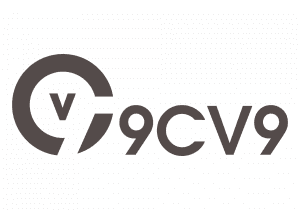Key Takeaways
- Corporate wellness software streamlines employee well-being programs through personalized health tracking, mental health support, and goal setting.
- It integrates with wearables, HR systems, and mobile apps to provide real-time data and enhance workforce engagement.
- Adopting wellness software leads to improved productivity, reduced healthcare costs, and a stronger organizational culture.
In today’s fast-evolving corporate environment, employee well-being has emerged as a key strategic priority for forward-thinking organizations. With increasing awareness around the connection between employee health and organizational performance, businesses are investing more in comprehensive wellness initiatives to boost productivity, reduce absenteeism, and enhance workplace morale. As a result, corporate wellness software has become an essential digital solution for managing and scaling these efforts efficiently across organizations of all sizes.

Corporate wellness software is designed to streamline and enhance employee wellness programs by providing digital tools that support physical, mental, emotional, and social well-being. This technology-driven platform enables companies to offer a wide range of health-oriented services and incentives—from fitness tracking and nutrition guidance to stress management, mental health support, and performance analytics. By integrating these services into a single platform, corporate wellness software helps businesses deliver personalized wellness experiences, engage employees more effectively, and track the overall impact of wellness programs through data-driven insights.
As workplace dynamics shift due to remote work, hybrid models, and increasing demands for work-life balance, corporate wellness software is playing a transformative role in how organizations approach employee care. Traditional wellness initiatives that relied on sporadic workshops or gym memberships are no longer sufficient. Companies now require scalable and measurable tools that align with diverse employee needs and preferences—regardless of where they work. This shift has amplified the demand for intelligent wellness platforms that offer real-time monitoring, flexible goal-setting, and seamless integration with existing HR systems and wearable devices.
Moreover, organizations that invest in wellness technologies often witness measurable returns in the form of reduced healthcare costs, improved employee retention, and stronger workplace culture. These platforms not only foster healthier lifestyles but also contribute to enhanced job satisfaction, team collaboration, and long-term employee engagement. From small startups to multinational corporations, wellness software is becoming an indispensable asset in building a resilient, healthy, and motivated workforce.
This blog will provide a comprehensive exploration of what corporate wellness software is and how it works, covering its core components, operational mechanisms, key features, and benefits. It will also highlight how companies across different industries are leveraging this technology to create more dynamic and health-conscious work environments. Whether you’re an HR leader seeking to improve your organization’s well-being strategy or a business owner considering new ways to support your team, understanding corporate wellness software is crucial in today’s competitive and health-conscious business world.
What is Corporate Wellness Software and How It Works
- Introduction to Corporate Wellness Software
- Key Components of Corporate Wellness Software
- How Corporate Wellness Software Works
- Benefits of Using Corporate Wellness Software
- Industries That Use Corporate Wellness Software
- Top Features to Look for in Corporate Wellness Software
- Key Challenges in Implementing Wellness Software
- Future Trends in Corporate Wellness Technology
1. Introduction to Corporate Wellness Software
In the evolving landscape of employee experience and human capital management, organizations are increasingly prioritizing workplace wellness as a strategic necessity rather than a secondary benefit. Corporate wellness software has emerged as a pivotal tool to address the growing need for holistic well-being in the workplace, combining technology, data analytics, and behavioral science to foster healthier, more engaged, and more productive employees.
This section provides a detailed introduction to corporate wellness software, exploring what it is, why it matters, how it aligns with organizational goals, and which examples and data highlight its rising importance in today’s work environment.
What is Corporate Wellness Software?
- Definition and Core Purpose
- A digital platform designed to manage, deliver, and measure corporate health and well-being initiatives.
- Facilitates physical, mental, emotional, and sometimes financial wellness programs for employees.
- Provides a centralized system for tracking wellness activities, setting goals, and offering incentives.
- Multi-Functional Capabilities
- Integrates fitness tracking, nutrition coaching, stress management, sleep monitoring, and mental health tools.
- Connects with wearables, HR software, and EAPs (Employee Assistance Programs) for seamless data sharing.
- Example: Virgin Pulse offers a full-featured wellness ecosystem with daily habits tracking, personal health assessments, and wellness challenges tailored to employee goals.
Why Corporate Wellness Software Is Increasingly Essential
- Workforce Health Trends
- Rising cases of workplace stress, burnout, chronic diseases, and sedentary lifestyles have impacted productivity and healthcare costs.
- Post-pandemic shifts toward remote and hybrid work have intensified the demand for digital-first wellness solutions.
- Strategic HR Goals
- Supports talent retention, improves employee satisfaction, and reinforces a healthy company culture.
- Aligns with DEI (Diversity, Equity & Inclusion) initiatives and ESG (Environmental, Social, Governance) compliance.
- Example: Limeade links wellness engagement to employee experience metrics, helping HR leaders boost morale and reduce turnover.
Key Functions of Corporate Wellness Software
- Employee Engagement
- Personalized wellness journeys based on health risk assessments and behavior analytics.
- Push notifications, gamified challenges, and social leaderboards keep users motivated.
- Health Data Tracking and Insights
- Tracks steps, calories, hydration, sleep, mood, and stress through connected devices and self-reports.
- Provides dashboards and analytics to HR for performance tracking and risk analysis.
- Behavioral Change Facilitation
- Offers coaching, micro-learning modules, and AI-driven nudges to build long-term healthy habits.
- Example: WellSteps emphasizes data-driven interventions, offering dynamic assessments and customized corporate wellness programs based on real-time insights.
Comparison Table: Core Capabilities of Leading Corporate Wellness Software
| Feature / Platform | Virgin Pulse | Limeade | Wellable | Sprout at Work | LifeWorks |
|---|---|---|---|---|---|
| Fitness Tracking | ✅ | ✅ | ✅ | ✅ | ✅ |
| Mental Health Support | ✅ | ✅ | ⚠️ | ✅ | ✅ |
| Gamification | ✅ | ✅ | ✅ | ✅ | ⚠️ |
| AI Personalization | ✅ | ✅ | ⚠️ | ✅ | ⚠️ |
| Integration with HR Tools | ✅ | ✅ | ✅ | ✅ | ✅ |
| Mobile App Support | ✅ | ✅ | ✅ | ✅ | ✅ |
| Real-Time Reporting | ✅ | ✅ | ✅ | ✅ | ✅ |
✅ = Fully Supported | ⚠️ = Partially Supported
Pie Chart: Most Commonly Used Modules in Corporate Wellness Software
mermaidCopyEditpie
title Usage Distribution of Wellness Software Modules (2024 Survey)
"Fitness and Step Tracking" : 25
"Mental Health Tools" : 20
"Sleep and Recovery Monitoring" : 15
"Nutrition Guidance" : 13
"Goal Setting and Coaching" : 12
"Social Challenges & Gamification" : 10
"Telehealth and Counseling" : 5
The Role of Wellness Software in Workforce Optimization
- Improved Employee Performance
- Healthier employees exhibit better focus, cognitive function, and energy levels.
- Wellness programs reduce presenteeism and boost day-to-day productivity.
- Lower Healthcare Costs
- Preventive wellness reduces chronic illness rates and insurance claims.
- Promotes early detection and management of physical and mental health conditions.
- Higher Engagement and Retention
- Employees feel valued when their well-being is prioritized.
- Companies with robust wellness programs see lower attrition and higher job satisfaction.
- Example: A case study by Spring Health showed that companies using their integrated wellness platform reduced employee absenteeism by 20% and saw a 30% increase in engagement scores.
Use Cases Across Industries
- Technology
- Remote teams benefit from app-based wellness challenges and virtual therapy.
- Emphasis on mental health and burnout prevention.
- Healthcare
- On-site medical staff use biometric screenings and personalized coaching tools.
- Encourages wellness among caregivers and clinicians.
- Finance and Insurance
- High-stress roles supported with mental resilience and mindfulness modules.
- Promotes work-life balance in high-demand sectors.
- Retail and Manufacturing
- Fitness challenges and nutrition tracking tools tailored for shift workers.
- Mobile-first solutions ideal for on-the-go employees.
Conclusion: Corporate Wellness Software as a Foundational Business Asset
The modern workplace is undergoing a profound transformation, and at the heart of that change lies the growing emphasis on employee well-being. Corporate wellness software is no longer an optional add-on—it has become a strategic foundation for sustainable workforce management. With its ability to deliver personalized, scalable, and data-driven well-being solutions, it empowers companies to support employees proactively, reduce operational risks, and build a thriving organizational culture.
From predictive analytics and AI coaching to integrated mental health resources and social wellness campaigns, wellness platforms are redefining how employers approach workforce health. Investing in such software is a forward-looking strategy that benefits both people and profits, helping organizations remain resilient, engaged, and competitive in an increasingly health-conscious world.
2. Key Components of Corporate Wellness Software
Corporate wellness software is a multi-functional platform designed to manage and support all aspects of employee well-being. These systems offer a variety of integrated modules and tools tailored to physical, mental, emotional, and social wellness. Below is a detailed breakdown of the key components that make up a comprehensive corporate wellness software solution, including real-world examples and a comparison chart to help visualize the offerings.
Health and Fitness Tracking
- Activity and Step Tracking
- Syncs with wearable devices like Fitbit, Apple Watch, or Garmin
- Encourages daily step goals, walking challenges, and physical competitions
- Exercise Programs and Workouts
- On-demand video libraries for yoga, cardio, strength training, and more
- Live virtual classes to promote physical activity in hybrid work environments
- Health Metrics Monitoring
- Tracks BMI, blood pressure, heart rate, and sleep patterns
- Enables health risk assessments based on user data
- Example: Virgin Pulse integrates with over 30 wearable devices to track real-time employee physical activity and encourage healthy competition through team fitness challenges.
Mental Health and Emotional Wellness Support
- Mindfulness and Meditation Tools
- Guided meditation sessions for stress reduction
- Breathing exercises and mental reset features
- Cognitive Behavioral Therapy (CBT) Resources
- Modules for anxiety, depression, and burnout prevention
- Access to digital therapy exercises and journaling tools
- Teletherapy Integration
- Secure access to licensed mental health professionals
- One-on-one counseling sessions via video or chat
- Burnout Detection
- AI-driven tools that detect patterns in behavior or absenteeism signaling potential burnout
- Example: Limeade offers integrated emotional well-being assessments and personalized recommendations, helping organizations proactively address stress and burnout.
Nutrition and Lifestyle Management
- Personalized Meal Plans
- Tailored nutritional programs based on health goals or restrictions
- Recipe libraries and grocery shopping lists
- Hydration and Diet Logging
- Daily reminders to drink water or log meals
- Integration with apps like MyFitnessPal
- Lifestyle Habit Building
- Smoking cessation programs
- Sleep improvement plans and screen-time management
- Example: Wellable includes gamified nutrition challenges and wellness coaching to encourage healthy eating habits.
Incentive and Rewards Programs
- Gamification Modules
- Points and badges awarded for completing activities or challenges
- Leaderboards for departments or teams
- Tangible Rewards
- Integration with gift card platforms (e.g., Amazon, Starbucks, Visa)
- Health savings account contributions or paid time off as incentives
- Recognition Features
- Peer-to-peer recognition tools to celebrate health achievements
- HR shout-outs and wellness spotlights in company communications
- Example: MoveSpring allows employers to create multi-level wellness challenges with tiered incentives that boost long-term participation.
Employee Engagement and Communication Tools
- Social Wellness Challenges
- Team-based or company-wide health competitions
- Virtual events like 5K runs or meditation marathons
- Wellness Communities
- Internal message boards or forums for sharing tips and progress
- Group coaching sessions or mentorship programs
- Custom Notifications and Reminders
- Daily nudges for fitness, mindfulness, and hydration
- Push notifications via mobile or email for scheduled activities
- Example: CoreHealth by Carebook promotes collaboration through wellness chat groups and employee feedback polls.
Analytics, Dashboards, and Reporting
- Real-Time Employee Engagement Metrics
- Tracks participation, activity completion, and engagement scores
- Compares engagement trends over time or across departments
- ROI and Outcome Tracking
- Calculates cost savings through reduced absenteeism and healthcare usage
- Measures productivity improvements and morale impact
- Customizable Admin Dashboards
- Visual data presentation for HR and executives
- Exportable reports for audits and wellness planning
- Example: Sprout At Work provides real-time wellness analytics and custom dashboards tailored to specific organizational goals.
Integration Capabilities
- Wearable and App Integration
- Connects with fitness trackers, health apps, and biometric devices
- Syncs with platforms like Apple Health, Google Fit, and Samsung Health
- HR System Integration
- Works with payroll, attendance, and benefits management tools (e.g., ADP, BambooHR)
- Ensures seamless workflow between wellness data and employee records
- Compliance and Data Security
- Ensures adherence to HIPAA, GDPR, and other relevant regulations
- Includes encrypted communication and secure data storage
Corporate Wellness Software Feature Comparison Table
| Feature Category | Virgin Pulse | Limeade | Wellable | MoveSpring | Sprout at Work |
|---|---|---|---|---|---|
| Fitness Tracking | ✅ | ✅ | ✅ | ✅ | ✅ |
| Mental Health Tools | ✅ | ✅ | ⚠️ | ⚠️ | ✅ |
| Nutrition & Lifestyle | ✅ | ⚠️ | ✅ | ⚠️ | ✅ |
| Incentives & Gamification | ✅ | ✅ | ✅ | ✅ | ✅ |
| Employee Communication | ✅ | ✅ | ✅ | ✅ | ✅ |
| Reporting & Analytics | ✅ | ✅ | ✅ | ⚠️ | ✅ |
| HR Integration | ✅ | ✅ | ✅ | ⚠️ | ✅ |
✅ = Fully Supported | ⚠️ = Limited Support
Visual Representation: Wellness Software Ecosystem
A[Employee Input] --> B[Corporate Wellness Software]
B --> C[Fitness Tracking Module]
B --> D[Mental Health Tools]
B --> E[Nutrition & Lifestyle Features]
B --> F[Incentive System]
B --> G[HR Analytics & Reporting]
C --> H[Wearable Devices]
F --> I[Rewards & Recognition]
This robust combination of wellness features allows businesses to deliver holistic wellness programs tailored to the unique needs of their workforce. By integrating physical health, mental well-being, and engagement tracking into one centralized platform, corporate wellness software ensures measurable, scalable, and impactful outcomes for modern organizations.
3. How Corporate Wellness Software Works
Corporate wellness software operates as a digital ecosystem designed to streamline, automate, and personalize wellness initiatives within the workplace. It functions by integrating employee data, wellness content, behavior tracking, and incentive programs into a unified platform that benefits both employers and employees. This section explores the workflow of how corporate wellness software works, from onboarding to analytics, with detailed explanations, examples, and data visualizations.
User Onboarding and Personalization
- Employee Registration
- Employees register via email, SSO (Single Sign-On), or through the HRIS integration
- User profiles are created with health preferences, goals, and fitness levels
- Initial Health Assessment
- Employees complete surveys and digital Health Risk Assessments (HRAs)
- Data collected includes physical activity, sleep patterns, stress levels, diet, and mental wellness
- Personalized Wellness Plans
- AI-powered algorithms generate tailored programs based on assessment results
- Personalized goals are set for areas like weight loss, stress reduction, or improved sleep
- Example: Virgin Pulse uses its “Health Check” tool to recommend daily habits and customized journeys based on lifestyle goals and self-reported health data.
Program Implementation and Engagement
- Daily and Weekly Wellness Activities
- Access to daily challenges (e.g., steps walked, hydration targets)
- Weekly themes (e.g., Mental Health Mondays, Fitness Fridays)
- Integrated Wellness Modules
- Physical wellness: workout videos, step tracking, and gym class bookings
- Mental wellness: mindfulness exercises, teletherapy sessions, digital journals
- Nutritional health: meal planners, water tracking, and diet coaching
- Gamification and Community Features
- Leaderboards, team competitions, and streak rewards
- Virtual wellness events and group challenges for remote teams
- Real-time Feedback Mechanisms
- Instant feedback via dashboards and mobile notifications
- Nudges for missed activities or motivational push messages
- Example: MoveSpring runs 4-week company-wide step challenges with weekly updates, team comparisons, and mobile notifications to drive ongoing engagement.
Integration with Devices and Platforms
- Wearables and Fitness Trackers
- Connects seamlessly with Apple Watch, Fitbit, Garmin, Samsung Health, and Google Fit
- Real-time sync of fitness data such as steps, heart rate, calories, and sleep
- HR and Payroll Systems
- Syncs with HR platforms like BambooHR, ADP, Workday for seamless access
- Attendance, incentives, and PTO integration with wellness activities
- Mobile and Desktop Compatibility
- Cloud-based dashboards accessible from any device
- Native mobile apps for iOS and Android ensure on-the-go participation
- Example: Sprout at Work offers multi-device integration with real-time sync to wearable data and personalized dashboards for each user.
Monitoring, Analytics, and Outcome Evaluation
- Engagement and Participation Tracking
- Monitors who joins challenges, frequency of app usage, and goal completions
- Breaks down engagement by department, location, or demographic
- Behavioral Insights and Health Trends
- Uses aggregated data to identify trends in mental health, sleep deprivation, or sedentary behavior
- Enables targeted interventions such as stress relief campaigns or nutrition workshops
- Administrative Dashboards
- HR can access data visualizations for wellness ROI, absenteeism trends, and employee feedback
- Customizable reporting tools for executive summaries
- ROI and Impact Measurement
- Tracks healthcare cost savings, reduced sick days, and productivity metrics
- Compares wellness impact before and after program implementation
- Example: Limeade provides a proprietary “Well-being Index” that allows organizations to benchmark results over time and take corrective action when participation or satisfaction drops.
Workflow Table: Corporate Wellness Software Operations
| Stage | Key Activities | Tools Used | Stakeholders Involved |
|---|---|---|---|
| Onboarding | Health assessment, goal-setting, user profile setup | Surveys, HRAs, AI recommendation engines | Employee, HR |
| Program Launch | Scheduling events, launching challenges, enabling modules | Admin dashboard, calendar, notifications | Wellness coordinators, HR |
| Engagement | Activity tracking, gamification, personalized plans | Mobile app, wearable sync, leaderboards | Employees, team managers |
| Integration | Sync with wearables and HR systems | APIs, HRIS connectors, mobile platforms | IT department, HR |
| Monitoring & Feedback | Real-time progress reports, motivational nudges | Analytics engine, dashboards, push alerts | HR, wellness managers |
| Evaluation & Reporting | ROI calculations, trend analysis, participation reports | Custom reports, data visualization tools | Executives, HR analytics teams |
Visual Diagram: End-to-End Workflow of Corporate Wellness Software
A[Employee Signup] --> B[Health Risk Assessment]
B --> C[Personalized Wellness Plan]
C --> D[Engagement with Wellness Activities]
D --> E[Real-Time Monitoring & Feedback]
E --> F[Data Collection & Analytics]
F --> G[HR/Admin Dashboard]
G --> H[ROI Measurement & Strategic Improvements]
Example Use Case: Monthly Wellness Challenge in a Mid-Sized Company
| Week | Activity Theme | Employee Participation (%) | Average Steps/Day | Key Outcomes |
|---|---|---|---|---|
| 1 | Get Moving (Step Goal) | 85% | 8,500 | Boosted initial enthusiasm |
| 2 | Eat Clean (Nutrition) | 76% | 8,200 | Increased water and healthy meal logs |
| 3 | De-stress (Mindfulness) | 68% | 7,900 | Drop in reported stress levels |
| 4 | Team Wellness Challenge | 92% | 9,100 | Highest engagement through teamwork |
By combining digital tools, data analytics, and behavioral science, corporate wellness software ensures that wellness programs are proactive, scalable, and measurable. It empowers employees to take control of their well-being while giving employers the tools to track progress and refine their initiatives for better organizational outcomes. Whether through gamified step challenges or integrated mental health support, the software creates a unified framework that aligns health goals with business performance.
4. Benefits of Using Corporate Wellness Software
The adoption of corporate wellness software is no longer a luxury—it has become a strategic necessity for organizations seeking to build healthier, more engaged, and more productive workforces. This all-in-one digital solution helps HR teams design, implement, and manage wellness programs efficiently, while also delivering tangible results that align with business goals. Below is a comprehensive breakdown of the key benefits of using corporate wellness software, supported by examples, tables, and charts to illustrate its organizational value.
Enhanced Employee Health and Well-Being
- Physical Wellness Support
- Encourages daily movement through integrated fitness trackers and exercise modules
- Reduces risks of chronic conditions such as obesity, hypertension, and diabetes
- Mental and Emotional Support
- Offers stress-reduction tools like guided meditation, virtual counseling, and mood tracking
- Provides proactive mental health interventions through burnout detection
- Nutrition and Lifestyle Management
- Delivers personalized meal plans, hydration reminders, and sleep improvement programs
- Promotes long-term healthy habits and preventative care
- Example: Limeade reported a 34% improvement in employee stress levels through its mindfulness programs and virtual mental wellness initiatives.
Increased Employee Engagement and Retention
- Gamification and Rewards
- Drives participation via leaderboards, point systems, and wellness challenges
- Increases excitement around wellness goals with tangible incentives
- Community and Team Building
- Promotes collaboration through group challenges and social interaction tools
- Strengthens internal relationships and employee morale
- Personalized Experience
- Employees receive content tailored to their goals and interests, enhancing relevance and motivation
- User-centric approach leads to greater daily engagement
- Example: Companies using Virgin Pulse saw up to a 56% increase in employee participation in corporate wellness activities within the first 90 days.
Boosted Productivity and Performance
- Reduced Presenteeism and Absenteeism
- Healthier employees are less likely to take sick days or underperform while at work
- Preventative care reduces the frequency and severity of illness-related absences
- Improved Focus and Energy Levels
- Programs that improve diet, exercise, and sleep help enhance mental alertness
- Employees can maintain better concentration and higher output during work hours
- Work-Life Balance
- Stress-relief tools and flexible wellness programs help employees recharge and avoid burnout
- Contributes to long-term productivity sustainability
- Example: A report by WellSteps found that companies using wellness software observed a 25% increase in employee productivity within 6 months of implementation.
Cost Savings on Healthcare and Insurance
- Lower Medical Claims
- Preventive care features reduce the number of medical claims and healthcare visits
- Chronic conditions are better managed or avoided altogether
- Reduced Insurance Premiums
- Employers can negotiate lower premiums based on improved employee health outcomes
- Data collected can be used to demonstrate risk reduction to insurers
- Early Intervention and Risk Mitigation
- Software can flag early signs of physical or mental health issues
- Employers can intervene before problems escalate into costly treatments
- Example: According to Harvard Business Review, for every $1 spent on wellness programs, employers save approximately $3.27 in healthcare costs.
Data-Driven Decision-Making and ROI Tracking
- Analytics Dashboards
- HR teams gain real-time insights into program participation, effectiveness, and satisfaction
- Data is segmented by department, role, location, or engagement levels
- ROI Measurement Tools
- Calculates cost savings from reduced absenteeism, improved productivity, and healthcare reductions
- Visualizes wellness trends over time to support budget planning and strategy refinement
- Custom Reports and KPIs
- Provides exportable reports for stakeholder presentations and compliance documentation
- Tracks KPIs such as employee engagement scores, activity rates, and completion levels
- Example: Sprout at Work offers predictive analytics that help companies identify high-risk areas, enabling preemptive wellness campaigns to avoid future costs.
Customization, Flexibility, and Scalability
- Modular Program Design
- Employers can choose from various modules (mental health, fitness, nutrition, etc.) based on organizational needs
- Easily scalable for small teams or global enterprises
- Employee Choice and Personalization
- Allows each user to pick programs that suit their preferences and lifestyle
- Increases adoption and sustained participation
- Supports Remote and Hybrid Teams
- Cloud-based access ensures inclusivity across multiple locations and time zones
- Keeps remote employees connected to the company wellness culture
- Example: Wellable supports both remote and office-based employees through mobile wellness challenges and virtual coaching sessions, making it ideal for distributed teams.
Corporate Wellness Software ROI Table
| Benefit Category | Metric Example | Average Improvement (%) | Example Tool |
|---|---|---|---|
| Employee Health | Reduced BMI and cholesterol levels | 20%–30% | Virgin Pulse |
| Engagement & Participation | Increase in program participation | 40%–60% | Limeade |
| Productivity | Reduction in presenteeism | 25% | WellSteps |
| Healthcare Cost Savings | Annual savings per employee | $350–$550 | Harvard Study Data |
| Retention | Reduction in voluntary turnover | 10%–15% | Sprout at Work |
Conclusion of Benefits
Corporate wellness software not only simplifies the management of employee wellness programs but also delivers substantial value across multiple areas of the organization. From enhancing health outcomes and employee engagement to reducing costs and improving workplace culture, the return on investment is both measurable and impactful. When integrated with existing HR systems and tailored to the unique needs of the workforce, corporate wellness software becomes a critical pillar of modern employee experience and organizational success.
5. Industries That Use Corporate Wellness Software
Corporate wellness software is no longer limited to health-centric companies or large corporations. Today, a wide array of industries are leveraging wellness platforms to support their employees’ physical, mental, and emotional well-being. As employee wellness becomes increasingly linked to organizational performance, more sectors are adopting wellness technologies to foster productivity, reduce healthcare costs, and build resilient workplace cultures. This section provides an in-depth look into the top industries that use corporate wellness software, along with examples, data-driven insights, and industry-specific use cases.
Technology and Software Development
- High Mental Strain and Sedentary Lifestyle
- Software engineers and IT professionals often work long hours in front of screens
- High-stress levels due to tight deadlines, innovation pressure, and remote environments
- Wellness Software Impact
- Supports mindfulness, movement reminders, eye strain exercises, and digital detox programs
- Promotes work-life balance and reduces burnout in high-pressure settings
- Example: Google uses in-house wellness initiatives supported by software tools that offer mental health resources, ergonomic tips, and on-demand fitness content for employees.
Finance and Banking
- High-Stakes and High-Stress Environments
- Roles in investment banking, accounting, and trading involve high performance under pressure
- Risk of chronic stress, hypertension, and mental fatigue
- Wellness Software Impact
- Provides access to meditation tools, teletherapy, and stress assessments
- Offers team-based challenges to build camaraderie and reduce burnout
- Example: JPMorgan Chase employs a holistic wellness platform that includes physical activity trackers, coaching, and 24/7 mental health resources to support financial professionals.
Healthcare and Medical Services
- Physically and Emotionally Demanding Roles
- Doctors, nurses, and healthcare administrators face constant physical and emotional stress
- High incidence of compassion fatigue and burnout
- Wellness Software Impact
- Facilitates quick stress-relief exercises and breathing techniques during shifts
- Supports sleep improvement, emotional resilience training, and wellness journaling
- Example: Kaiser Permanente implements a robust wellness platform for its staff that includes self-assessments, health tracking, and mindfulness-based resilience training.
Education and Academic Institutions
- Occupational Stress and Burnout Among Educators
- Teachers and academic staff face classroom pressures, administrative tasks, and emotional fatigue
- Long work hours and increasing demands lead to job dissatisfaction
- Wellness Software Impact
- Encourages mindfulness practices, fitness activities, and healthy lifestyle habits
- Enables institutions to measure wellness trends among faculty and staff
- Example: Arizona State University offers digital wellness programs to staff and faculty, including meditation apps, health coaching, and nutritional guidance.
Manufacturing and Industrial Sectors
- Physically Demanding Work and Injury Risk
- Employees are exposed to repetitive strain, environmental hazards, and shift work fatigue
- High costs related to workplace injuries and healthcare claims
- Wellness Software Impact
- Monitors fatigue levels, promotes hydration, and encourages stretching routines
- Offers wearable integrations to track movement and support injury prevention
- Example: General Electric (GE) uses a wellness platform with built-in analytics to track employee movement data and initiate wellness interventions in their production units.
Retail and E-Commerce
- Irregular Hours and Customer-Facing Pressure
- Retail staff often deal with long hours, irregular shifts, and standing fatigue
- High emotional labor due to constant customer interaction
- Wellness Software Impact
- Introduces short-form fitness routines, mental reset breaks, and hydration tracking
- Offers gamified programs to engage part-time and shift-based workers
- Example: Target introduced a mobile wellness app for associates that includes habit tracking, rewards for healthy behaviors, and motivational content for shift workers.
Telecommunications and Call Centers
- High Call Volume and Repetitive Tasks
- Employees handle customer complaints, technical issues, and script-based calls daily
- Leads to mental fatigue, vocal strain, and sedentary issues
- Wellness Software Impact
- Encourages voice exercises, mindfulness techniques, and ergonomic awareness
- Facilitates group wellness breaks and virtual yoga sessions
- Example: T-Mobile provides access to wellness software that includes emotional well-being modules, digital meditation, and daily step challenges.
Legal Services and Law Firms
- Demanding Schedules and High Cognitive Load
- Lawyers and paralegals face heavy workloads, client deadlines, and billable hour pressure
- Prone to anxiety, insomnia, and high stress
- Wellness Software Impact
- Helps manage mental fatigue with stress tracking and digital therapy tools
- Includes quiet time alerts and focus-enhancing wellness routines
- Example: Baker McKenzie has invested in mental health and wellness software to offer mindfulness training, burnout diagnostics, and confidential counseling to its legal team.
Logistics and Transportation
- Shift Work and Travel-Related Health Issues
- Truck drivers, pilots, and warehouse staff often work night shifts or experience jet lag
- Increased risks of sleep disorders, poor diet, and physical strain
- Wellness Software Impact
- Offers sleep hygiene education, fatigue detection, and on-the-go fitness challenges
- Supports remote accessibility via mobile apps for traveling workers
- Example: FedEx leverages wellness software that includes sleep tracking, health alerts, and mobile-friendly dashboards to support frontline and logistics staff.
Industry-Wise Adoption Chart
A[Technology & Software - 90% Adoption]
B[Finance & Banking - 85% Adoption]
C[Healthcare - 80% Adoption]
D[Education - 78% Adoption]
E[Manufacturing - 70% Adoption]
F[Retail - 68% Adoption]
G[Telecom & Call Centers - 65% Adoption]
H[Legal Services - 62% Adoption]
I[Logistics & Transport - 60% Adoption]
Comparison Table: Industry Use Cases of Wellness Software
| Industry | Common Health Challenges | Key Wellness Features Used | Notable Example |
|---|---|---|---|
| Technology | Sedentary lifestyle, stress | Ergonomic tips, digital detox, meditation | |
| Finance | Hypertension, burnout | Stress tracking, mental health counseling | JPMorgan Chase |
| Healthcare | Compassion fatigue, burnout | Resilience training, sleep hygiene, quick stress tools | Kaiser Permanente |
| Education | Burnout, job dissatisfaction | Mindfulness, nutrition coaching, mental health assessments | Arizona State University |
| Manufacturing | Physical strain, repetitive injuries | Movement tracking, hydration reminders, wearable integration | General Electric |
| Retail | Fatigue, irregular hours | On-the-go workouts, gamified rewards, shift-based tracking | Target |
| Telecommunications | Mental fatigue, sedentary issues | Mindfulness sessions, team challenges, wellness breaks | T-Mobile |
| Legal Services | Anxiety, long hours | Confidential counseling, quiet-time reminders | Baker McKenzie |
| Logistics & Transport | Sleep disorders, travel fatigue | Sleep tracking, remote access, mobile-friendly dashboards | FedEx |
Conclusion: A Multi-Industry Necessity
Corporate wellness software is no longer a niche solution limited to progressive tech firms. It is a universal tool that has proven value across a broad spectrum of industries—from healthcare and finance to education and logistics. Whether it’s reducing employee stress, improving physical health, or driving engagement, wellness platforms can be customized to suit the unique challenges and goals of every sector. As workforce wellness continues to play a critical role in organizational success, adopting the right wellness software is a strategic move across industries.
6. Top Features to Look for in Corporate Wellness Software
When selecting the right corporate wellness software, organizations must consider a broad range of features that address physical, mental, and emotional health while also aligning with operational goals and company culture. A robust platform should be scalable, user-friendly, and capable of delivering measurable results. Below is a comprehensive breakdown of the top features to look for in corporate wellness software, including key functions, real-world examples, and visual aids to support your decision-making process.
1. Comprehensive Health and Wellness Modules
- Fitness and Activity Tracking
- Syncs with wearables like Fitbit, Apple Watch, Garmin, and Google Fit
- Tracks steps, calories burned, distance walked, and active minutes
- Allows custom challenges (e.g., walkathons, deskercise programs)
- Nutrition and Lifestyle Coaching
- Offers meal planning, hydration tracking, and sleep optimization tools
- Includes content on dietary habits, healthy recipes, and grocery lists
- Mental and Emotional Wellness Tools
- Guided meditation, stress management modules, digital CBT exercises
- Access to certified therapists via video or chat (teletherapy support)
- Example: Virgin Pulse delivers all-in-one wellness modules combining fitness, nutrition, and mental health into one seamless user experience.
2. Personalization and AI Recommendations
- Tailored Wellness Journeys
- Uses AI and machine learning to deliver customized wellness plans
- Adapts based on user behavior, preferences, and progress
- Health Risk Assessments (HRAs)
- Employees complete self-assessments to identify key health risks
- Data is used to shape personalized goals and recommended content
- Goal Setting and Tracking
- Allows employees to set personal goals and monitor progress
- Sends motivational nudges and milestone achievements
- Example: Limeade personalizes employee programs based on proprietary “Well-being Index” scores from initial assessments.
3. Gamification and Rewards Systems
- Points-Based Incentive Programs
- Employees earn points for completing wellness activities and challenges
- Points can be redeemed for gift cards, company merchandise, or PTO
- Team-Based Competitions
- Promotes collaboration with departments, offices, or global teams
- Leaderboards and challenge progress displayed in real time
- Badge and Milestone Recognition
- Visual rewards that celebrate healthy habits and wellness streaks
- Reinforces long-term behavior change and habit-building
- Example: MoveSpring integrates gamification with social engagement through scavenger hunts, trivia, and leaderboard competitions.
4. Seamless Integration Capabilities
- Wearable Device and App Integration
- Compatible with health and fitness apps (Apple Health, Samsung Health, MyFitnessPal)
- Automatic data syncing from wearables and smartphones
- HR System and Payroll Integration
- Syncs with HR tools like BambooHR, ADP, Workday, and SAP SuccessFactors
- Enables wellness data to inform payroll, benefits, and employee profiles
- SSO and API Support
- Offers Single Sign-On for secure, easy access
- Open APIs for custom workflows or third-party tools
- Example: Wellable seamlessly connects with both fitness apps and HR platforms, providing unified reporting across systems.
5. Real-Time Analytics and Reporting Dashboards
- Employee Engagement Metrics
- Tracks participation rates, logins, activity completions, and trends
- Filters by department, location, demographic, and wellness category
- Wellness ROI and KPI Tracking
- Calculates reductions in healthcare claims, absenteeism, and turnover
- Compares performance before and after wellness program implementation
- Custom Reports and Export Features
- HR teams can generate charts, downloadable reports, and executive summaries
- Useful for compliance, benchmarking, and planning
- Example: Sprout at Work offers an intuitive admin dashboard that highlights program impact and predictive health trends.
6. Accessibility and Mobile Optimization
- Mobile App Compatibility
- Native apps for iOS and Android to enable anytime, anywhere access
- Push notifications for activity reminders, challenge updates, and goals
- Multilingual Support
- Offers programs in multiple languages to serve global and diverse workforces
- Ensures inclusivity across locations
- User-Friendly Interface
- Easy navigation with intuitive layouts for employees and administrators
- Lowers the barrier to adoption across all tech skill levels
- Example: CoreHealth by Carebook provides customizable user portals that are mobile-optimized and fully localized.
7. Mental Health Integration and Support
- Teletherapy and EAP Access
- Direct access to licensed counselors or psychologists via video or chat
- Integration with Employee Assistance Programs (EAPs)
- Burnout and Stress Detection
- Uses survey data and behavior analytics to identify mental health risks
- Sends alerts to HR or wellness coaches for early intervention
- Self-Help Resources and Digital CBT
- On-demand toolkits for stress, anxiety, insomnia, and depression
- Supports ongoing emotional resilience development
- Example: LifeWorks integrates digital therapy, well-being resources, and crisis support lines into a single platform.
8. Administrative Control and Customization
- Modular Feature Activation
- Employers can enable or disable specific features based on company goals
- Easily scalable for small teams, mid-sized firms, or large enterprises
- Branding and Theming
- Custom logos, brand colors, and communication styles
- Aligns with company culture and employee expectations
- User Role Management
- Assign roles (e.g., admin, team leader, participant) with permission controls
- Allows segmented reporting and program delegation
- Example: WellSteps provides complete administrative customization, including branded wellness campaigns and departmental reporting views.
Feature Comparison Table of Leading Corporate Wellness Platforms
| Feature Category | Virgin Pulse | Limeade | Wellable | Sprout at Work | MoveSpring |
|---|---|---|---|---|---|
| Fitness Tracking | ✅ | ✅ | ✅ | ✅ | ✅ |
| Mental Health Tools | ✅ | ✅ | ⚠️ | ✅ | ⚠️ |
| Gamification & Rewards | ✅ | ✅ | ✅ | ✅ | ✅ |
| Personalization (AI) | ✅ | ✅ | ⚠️ | ✅ | ⚠️ |
| Integration with Devices | ✅ | ✅ | ✅ | ✅ | ✅ |
| HR System Integration | ✅ | ✅ | ✅ | ✅ | ⚠️ |
| Admin Dashboards & Reports | ✅ | ✅ | ✅ | ✅ | ✅ |
| Mobile & Multilingual Access | ✅ | ✅ | ✅ | ✅ | ✅ |
| Branding and Customization | ✅ | ✅ | ✅ | ✅ | ✅ |
✅ = Fully Supported | ⚠️ = Partial/Basic Support
Pie Chart: Most Requested Features in Corporate Wellness Software (Survey Data)
Most Requested Features in Corporate Wellness Software
"Fitness and Activity Tracking" : 25
"Mental Health Support" : 20
"Gamification and Rewards" : 15
"Integration with Wearables and HR Tools" : 12
"Personalization and AI Insights" : 10
"Reporting and Analytics" : 10
"Mobile Accessibility" : 8
Conclusion: Choosing the Right Feature Set
Selecting the right corporate wellness software is about identifying a platform that aligns with your workforce’s needs, engagement goals, and organizational objectives. The best solutions combine comprehensive wellness modules, advanced personalization, seamless integrations, and real-time analytics into a centralized, user-friendly system. By focusing on the features outlined above, organizations can ensure that their investment in wellness software drives measurable improvements in employee health, engagement, and overall workplace culture.
7. Key Challenges in Implementing Wellness Software
Despite the growing popularity and proven benefits of corporate wellness software, many organizations encounter a variety of challenges during the implementation phase. These obstacles can arise from technical limitations, organizational culture, employee skepticism, or inadequate planning. Understanding these barriers is essential for companies aiming to deploy a successful, scalable, and high-impact wellness program. Below is an in-depth analysis of the key challenges in implementing wellness software, supported by examples, visual aids, and actionable insights for mitigation.
1. Low Employee Engagement and Participation
- Lack of Awareness or Interest
- Employees may not fully understand the value of the software or its relevance to their needs
- Poor internal promotion can lead to low adoption rates
- Perception of Extra Work
- Users may see wellness tracking as time-consuming or intrusive
- Participation declines if activities are perceived as mandatory or disconnected from job roles
- Lack of Customization
- Generic wellness challenges may fail to resonate with a diverse workforce
- One-size-fits-all programs discourage continued involvement
- Example: A 2023 survey by Wellable found that 42% of HR professionals cited low engagement as their top barrier to wellness program success.
2. Data Privacy and Security Concerns
- Handling Sensitive Health Data
- Employees are cautious about sharing personal health information
- Fear of data misuse can reduce trust in the platform
- Compliance with Regulations
- Companies must ensure compliance with HIPAA, GDPR, and other data privacy laws
- Failure to meet standards can result in legal penalties
- Lack of Transparency
- Unclear privacy policies can trigger concerns over how data will be stored, shared, or used
- Example: In 2022, a wellness platform faced public backlash after reports of data sharing with third-party advertisers, leading to major trust issues and decreased adoption.
3. Integration with Existing Systems
- Compatibility Issues
- Challenges arise when integrating the wellness software with existing HR, payroll, or benefits systems
- Poor integration can lead to inconsistent data or duplicated entries
- Limited API Capabilities
- Not all wellness platforms offer open APIs or SSO (Single Sign-On) support
- Lack of automation increases manual workloads for HR teams
- Example: A mid-sized firm using Workday faced issues syncing wellness data from a third-party app, requiring additional IT support and delaying rollout.
4. Budget Constraints and ROI Justification
- High Initial Costs
- Comprehensive wellness platforms often involve upfront fees, licensing, and onboarding expenses
- Smaller companies may struggle to justify the investment without guaranteed ROI
- Unclear Metrics of Success
- Difficulties in linking wellness programs directly to financial gains
- Lack of quantifiable KPIs makes it harder to present results to stakeholders
- Example: A startup adopted a top-tier platform but abandoned it within a year due to underutilization and a lack of clear performance metrics for return on investment.
5. Inadequate Leadership Buy-In
- Limited Executive Support
- Programs without C-level backing often lack funding, visibility, and long-term momentum
- Senior leaders may not participate or promote the program actively
- No Wellness Champion
- Absence of internal advocates or wellness coordinators leads to inconsistent execution
- Without visible commitment, employees are less likely to engage
- Example: A global retailer struggled to increase program participation until senior executives began publicly participating in challenges and promoting the initiative.
6. Cultural and Geographic Diversity
- One-Size-Fits-All Programs
- Programs may not account for local cultural practices, health standards, or language differences
- Wellness definitions vary across global teams (e.g., meditation vs. physical activity)
- Time Zone and Work Schedule Barriers
- Remote and global teams may find it hard to join live sessions or sync with regional programs
- Employees on night shifts or in-field roles may feel excluded
- Example: A multinational corporation faced backlash for rolling out a US-centric wellness program that excluded cultural practices valued by employees in Asia and the Middle East.
7. Technology Access and Literacy Gaps
- Digital Divide
- Not all employees have consistent access to smartphones or wearables
- Frontline and blue-collar workers may lack the technical skills or devices to use the software
- Platform Complexity
- Overly complex dashboards and interfaces can discourage first-time users
- Poor user experience affects retention and satisfaction
- Example: A logistics company found limited participation among warehouse employees due to lack of mobile access and insufficient training on the wellness platform.
Comparison Table: Key Challenges and Mitigation Strategies
| Challenge | Description | Recommended Solution |
|---|---|---|
| Low Engagement | Employees are unaware or uninterested | Launch internal campaigns, gamify programs, personalize UX |
| Privacy Concerns | Fears about data misuse or lack of transparency | Use encrypted storage, communicate privacy policies clearly |
| Integration Barriers | Difficulty syncing with HR/payroll tools | Choose platforms with open APIs and SSO support |
| Budget Limitations | High upfront cost, unclear ROI | Start with pilot programs, track engagement KPIs |
| Lack of Executive Buy-In | No leadership promotion or visibility | Appoint wellness champions, include leaders in challenges |
| Cultural Incompatibility | Programs don’t reflect diverse health views | Localize content, support multiple languages |
| Tech Access Issues | Device unavailability, low tech literacy | Offer mobile-friendly apps, conduct training sessions |
Bar Chart: Most Common Barriers to Wellness Program Implementation
A[Low Employee Engagement - 42%]
B[Data Privacy Concerns - 35%]
C[System Integration Issues - 30%]
D[Budget Constraints - 28%]
E[Lack of Leadership Support - 25%]
F[Cultural/Geographic Gaps - 22%]
G[Tech Access Limitations - 18%]
Conclusion: Overcoming Barriers to Success
While the implementation of corporate wellness software presents several challenges, proactive planning and strategic execution can significantly mitigate risks. Organizations must take a holistic approach, addressing everything from technology access and cultural relevance to privacy compliance and leadership involvement. By recognizing these potential pitfalls early and adopting flexible, employee-centric solutions, companies can maximize the value of their wellness investment and build a healthier, more engaged workforce.
8. Future Trends in Corporate Wellness Technology
The future of corporate wellness is being shaped by advanced technologies, evolving employee expectations, and a growing recognition that well-being is integral to business success. As companies shift toward hybrid work models and employee-centric cultures, corporate wellness technology is evolving from basic tracking tools to intelligent, predictive platforms. This section explores the most transformative future trends in corporate wellness technology, with real-world examples, visualizations, and strategic insights for organizations aiming to future-proof their wellness programs.
1. AI-Powered Personalization and Predictive Analytics
- AI-Driven Wellness Journeys
- Artificial intelligence tailors wellness programs based on user behavior, preferences, and biometric data
- Machine learning models adjust challenges and content in real-time to increase engagement
- Predictive Health Insights
- AI predicts future health risks using behavioral, biometric, and environmental data
- Enables early interventions to prevent burnout, chronic disease, or absenteeism
- Behavioral Nudging Engines
- Smart algorithms send personalized prompts for hydration, movement, mindfulness, and breaks
- Behavioral science principles increase habit formation success rates
- Example: Limeade uses AI to analyze thousands of data points from assessments and activity logs to suggest customized daily wellness tips.
2. Integration with Wearables and IoT Devices
- Expansion of Wearable Ecosystems
- Beyond fitness trackers, platforms now integrate with smart rings, biosensors, and ECG monitors
- Measures advanced metrics like HRV (Heart Rate Variability), oxygen levels, and sleep cycles
- Real-Time Health Monitoring
- Continuous health tracking for early detection of fatigue, stress, or cardiovascular anomalies
- Enables HR teams to monitor team well-being trends across departments
- IoT-Enabled Workplace Wellness
- Smart office chairs, sit-stand desks, and ambient lighting systems integrated with wellness platforms
- Real-time ergonomic adjustments based on posture and productivity patterns
- Example: WHOOP integrates its smart wristbands with corporate wellness portals to deliver recovery insights and daily readiness scores to employees.
3. Virtual Reality (VR) and Augmented Reality (AR) Experiences
- Immersive Meditation and Mindfulness
- VR headsets provide calming environments like forests, beaches, or mountains for guided meditation
- Enhances mental wellness by reducing external distractions and improving immersion
- Fitness and Ergonomics Training
- AR-based workout instructions and posture correction for hybrid and remote workers
- Helps in improving movement quality and injury prevention
- Stress Management Simulation
- VR simulations to train employees in managing high-pressure scenarios with breathing and cognitive techniques
- Example: TRIPP, a VR wellness company, partners with wellness platforms to offer immersive meditative journeys to reduce stress and anxiety.
4. Mental Health as a Central Pillar
- Digital Mental Health Ecosystems
- Standalone mental health apps are being integrated into broader wellness platforms
- Includes CBT (Cognitive Behavioral Therapy), journaling, virtual therapy, and mental health assessments
- AI-Powered Mental Wellness Coaches
- AI chatbots provide 24/7 mental health support, mood tracking, and therapeutic exercises
- Natural Language Processing (NLP) allows empathetic conversations at scale
- Burnout and Fatigue Detection
- Uses passive monitoring (keyboard activity, login times, and survey fatigue scores) to flag burnout risks
- Automated alerts notify HR or managers for early intervention
- Example: Modern Health offers enterprise-ready mental health solutions that combine coaching, therapy, and digital exercises into a unified interface.
5. Personalized Nutrition and Genetic Wellness
- DNA-Based Wellness Programs
- Nutritional and fitness recommendations based on genetic profiles and metabolic traits
- Enables hyper-personalized guidance for diet, sleep, and exercise
- Microbiome and Gut Health Tracking
- Gut microbiota analysis integrated into wellness dashboards to guide personalized food choices
- Supplements and diet plans tailored to digestive health
- Smart Meal Planning Tools
- Integration with apps that recommend meals based on allergies, energy levels, and dietary goals
- Example: DayTwo partners with wellness providers to deliver food response scores based on gut microbiome testing.
6. Holistic Wellness and Life-Stage Support
- Financial and Career Wellness Tools
- Includes budgeting tools, debt reduction programs, and retirement planning modules
- Helps reduce financial stress—one of the top causes of poor employee mental health
- Family and Caregiver Support
- Wellness software expands to support parental wellness, elder care planning, and family counseling
- Includes content and benefits planning for different life stages
- Preventative Health Screenings and Wellness Exams
- Integrated scheduling and results tracking for biometric screenings, vaccinations, and annual checkups
- Example: Virgin Pulse offers life-stage modules that guide employees through events like marriage, parenthood, or financial transitions.
7. Gamified and Socially Connected Wellness
- Augmented Reality Wellness Games
- AR step challenges and scavenger hunts to engage employees in physical activity
- Makes wellness programs more interactive and fun
- Social Wellness Networks
- Employees form wellness groups or clubs (e.g., walking clubs, mindfulness circles)
- Encourages peer motivation and healthy competition
- Hybrid Challenges Across Teams
- Supports global offices or remote workers in joining cross-functional challenges
- Live tracking of results and celebration of winners company-wide
- Example: MoveSpring offers social feed features, photo sharing, and interactive challenges to boost engagement across teams.
8. DEI (Diversity, Equity, Inclusion) Integration in Wellness
- Culturally Inclusive Wellness Content
- Wellness platforms now offer programs that reflect different cultures, identities, and backgrounds
- Includes wellness content in multiple languages and formats
- Gender-Specific Health Programs
- Menstrual health tracking, menopause support, and fertility programs
- LGBTQ+ mental health content and community support tools
- Accessibility for All
- Enhanced support for employees with disabilities, neurodivergence, and mental health disorders
- Platforms designed with screen reader compatibility and sensory-friendly UI
- Example: LifeSpeak provides inclusive wellness resources tailored for underrepresented employee groups and neurodiverse teams.
Table: Future Wellness Tech Trends and Their Strategic Value
| Trend | Description | Strategic Benefit | Example Platform |
|---|---|---|---|
| AI Personalization | Custom wellness journeys based on predictive analytics | Boosts engagement and habit formation | Limeade |
| Wearables and IoT | Real-time tracking of health metrics | Enables early intervention and risk prevention | WHOOP |
| VR & AR | Immersive mental health and fitness experiences | Enhances participation and reduces stress | TRIPP |
| Mental Health Expansion | Integrated therapy, coaching, and AI chatbots | Supports resilience and emotional wellness | Modern Health |
| Genetic-Based Wellness | DNA-driven food and fitness recommendations | Increases relevance and effectiveness | DayTwo |
| Life-Stage and Financial Support | Programs for every phase of life and money management | Addresses holistic wellness | Virgin Pulse |
| Gamification and Social Tools | AR challenges, leaderboards, and group clubs | Fosters a culture of health and accountability | MoveSpring |
| Inclusive Wellness Design | DEI-centered health content and accessibility features | Improves equity and global participation | LifeSpeak |
Conclusion: Embracing the Next Wave of Corporate Wellness Innovation
As organizations seek to adapt to evolving work environments and prioritize employee-centric cultures, future trends in corporate wellness technology are becoming more intelligent, personalized, and holistic. From predictive AI and immersive wellness experiences to inclusive programming and genetic insights, the next generation of corporate wellness software will focus on customization, preventive care, and total well-being.
Forward-thinking companies that embrace these innovations early will not only enjoy enhanced workforce health and engagement but will also build a resilient culture that drives long-term organizational success.
Conclusion
In today’s highly dynamic and competitive work environment, organizations can no longer afford to treat employee wellness as a peripheral concern. It has evolved into a critical strategic imperative that directly impacts employee productivity, organizational culture, talent retention, and overall business performance. As the workplace continues to undergo rapid transformation—driven by hybrid work models, digital acceleration, and growing awareness of mental health—the role of corporate wellness software has become more central than ever before.
Corporate wellness software is far more than a digital tool for fitness tracking or health assessments. It is a comprehensive platform designed to support every aspect of employee well-being, including physical health, emotional resilience, mental clarity, nutritional balance, financial stability, and even social connection. From AI-powered personalization and virtual wellness coaching to integrated telehealth solutions and gamified challenges, today’s wellness software systems are both robust and adaptable to organizations of all sizes and industries.
This blog has provided an extensive overview of what corporate wellness software is and how it works, breaking down the core components, functionality, benefits, and implementation processes. It has also explored the industries that are actively leveraging wellness platforms, the key features organizations should prioritize, the common implementation challenges faced by HR leaders, and the emerging future trends that are shaping the next generation of corporate wellness technology.
Why Corporate Wellness Software Is No Longer Optional
The increasing prevalence of stress, burnout, and lifestyle-related illnesses among employees makes it clear that reactive healthcare models are no longer sustainable. Forward-thinking organizations are turning to wellness platforms to foster a preventive, proactive, and personalized approach to employee health. These platforms empower employees with tools to take control of their own well-being while also providing HR teams with data-driven insights to improve engagement and workplace culture.
Whether it’s through real-time health monitoring with wearables, immersive mindfulness experiences via VR, or personalized AI wellness journeys tailored to each employee’s unique needs, wellness software is redefining what it means to support human capital in the digital age. It transforms traditional HR practices into agile wellness ecosystems where individual health goals align with organizational success metrics.
Strategic Takeaways for Employers and HR Leaders
For businesses looking to stay competitive and sustainable, investing in corporate wellness software is not just beneficial—it is essential. Below are key takeaways for decision-makers:
- Enhance Productivity and Engagement: Healthier employees are more focused, motivated, and present—resulting in higher overall output.
- Reduce Absenteeism and Healthcare Costs: Wellness programs reduce long-term health risks, leading to fewer sick days and lower medical claims.
- Support Talent Retention and Attraction: Offering comprehensive wellness solutions positions a company as an employer of choice, especially among younger, health-conscious professionals.
- Foster a Positive Workplace Culture: A focus on well-being cultivates empathy, resilience, and collaboration—factors that are crucial in hybrid and distributed work models.
- Leverage Technology for Scalable Wellness: Cloud-based platforms, mobile apps, and AI allow companies to deliver impactful wellness programs globally and across all departments.
Looking Ahead: A Wellness-Centric Future of Work
As we look toward the future, corporate wellness software will continue to evolve—becoming more intelligent, integrated, inclusive, and indispensable. Organizations that embrace this technological evolution today will not only witness improved employee satisfaction and performance but will also cultivate a thriving, forward-focused culture that is built on health, empathy, and innovation.
In conclusion, corporate wellness software is no longer a luxury or a trend—it is a strategic necessity in the era of digital work and holistic employee experience. By understanding how it works and leveraging its full potential, companies can unlock the power of wellness to drive sustainable growth, reduce costs, and ensure long-term organizational vitality. Now is the time for businesses to move beyond reactive health policies and build a proactive, tech-enabled wellness infrastructure that empowers people and propels performance.
If you find this article useful, why not share it with your hiring manager and C-level suite friends and also leave a nice comment below?
We, at the 9cv9 Research Team, strive to bring the latest and most meaningful data, guides, and statistics to your doorstep.
To get access to top-quality guides, click over to 9cv9 Blog.
People Also Ask
What is corporate wellness software?
Corporate wellness software is a digital platform that helps companies manage, track, and improve employee health and well-being through various tools and programs.
How does corporate wellness software work?
It collects employee health data, offers personalized wellness plans, integrates with wearables, and provides analytics to monitor participation and outcomes.
Why is corporate wellness software important?
It promotes healthier lifestyles, reduces healthcare costs, boosts productivity, and supports employee engagement and retention.
What features should corporate wellness software include?
Key features include fitness tracking, mental health support, nutrition tools, goal setting, rewards, reporting, and third-party integrations.
Can corporate wellness software integrate with wearable devices?
Yes, most platforms sync with devices like Fitbit, Apple Watch, and Garmin to track physical activity, sleep, and heart rate.
Is corporate wellness software suitable for small businesses?
Yes, many solutions are scalable and designed to fit the needs of both small and large organizations.
How does wellness software benefit employees?
It empowers employees to set and achieve health goals, access mental health resources, and receive personalized wellness support.
What are the benefits for employers?
Employers gain insights into workforce well-being, reduce absenteeism, improve morale, and enhance overall organizational performance.
Is employee data safe on wellness platforms?
Reputable platforms comply with data protection regulations like GDPR and HIPAA, ensuring data is encrypted and secure.
Can wellness software support remote teams?
Yes, most systems are cloud-based and accessible via mobile apps, making them ideal for remote or hybrid workforces.
What are common challenges in implementing wellness software?
Challenges include low employee engagement, data privacy concerns, integration issues, and limited leadership support.
How do you measure the ROI of wellness software?
ROI is measured through reduced healthcare costs, improved employee productivity, higher engagement, and lower turnover rates.
What types of wellness programs can be included?
Programs may include fitness challenges, mindfulness sessions, mental health coaching, nutrition plans, and sleep tracking.
Can the software be customized to company needs?
Yes, many platforms offer customizable modules, branding, goal setting, and communication styles.
Does it include mental health resources?
Yes, leading platforms integrate teletherapy, stress management, digital CBT, and mental health assessments.
How much does corporate wellness software cost?
Costs vary based on features and organization size, ranging from a few dollars per user per month to enterprise-level pricing.
Is there support for multiple languages?
Many global platforms offer multilingual support to accommodate diverse and international teams.
What industries use corporate wellness software?
Common industries include tech, healthcare, finance, education, retail, and logistics, among others.
Can wellness software track health risk assessments?
Yes, it can conduct and track HRAs to identify health risks and recommend preventive wellness plans.
What role does AI play in wellness software?
AI helps personalize user experiences, predict health risks, and offer behavioral nudges to improve engagement.
Are there gamification features available?
Yes, many platforms use gamification like points, badges, and leaderboards to make wellness programs fun and engaging.
How can companies boost engagement with wellness software?
Engagement improves with leadership involvement, incentive programs, social challenges, and regular internal promotion.
Does wellness software help reduce absenteeism?
Yes, it promotes healthier behaviors and preventive care, leading to fewer sick days and improved attendance.
How long does implementation usually take?
Implementation typically takes a few weeks, depending on the organization’s size, customization needs, and IT infrastructure.
Can employees set their own wellness goals?
Yes, most systems allow users to set, track, and adjust personal goals for fitness, nutrition, and mental health.
Are wellness programs accessible on mobile devices?
Yes, most corporate wellness platforms provide fully functional mobile apps for iOS and Android devices.
Do platforms include coaching and support services?
Many platforms offer access to wellness coaches, nutritionists, and mental health professionals through chat or video.
What reporting capabilities do wellness platforms offer?
They offer real-time dashboards, participation reports, wellness trends, and exportable analytics for HR teams.
How does wellness software support workplace culture?
It fosters a supportive environment, encourages team bonding, and reinforces a culture of care and well-being.
Can wellness software help with DEI efforts?
Yes, inclusive platforms offer culturally sensitive programs, accessible features, and support for diverse wellness needs.































![Writing A Good CV [6 Tips To Improve Your CV] 6 Tips To Improve Your CV](https://blog.9cv9.com/wp-content/uploads/2020/06/2020-06-02-2-100x70.png)


